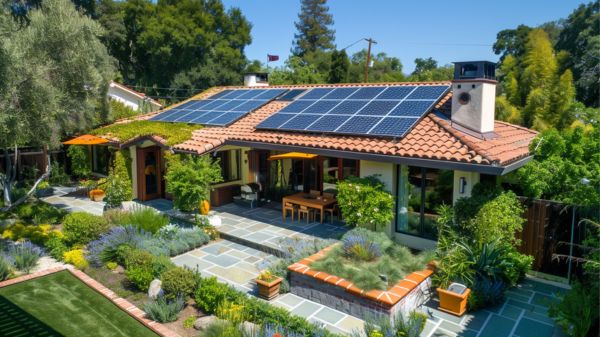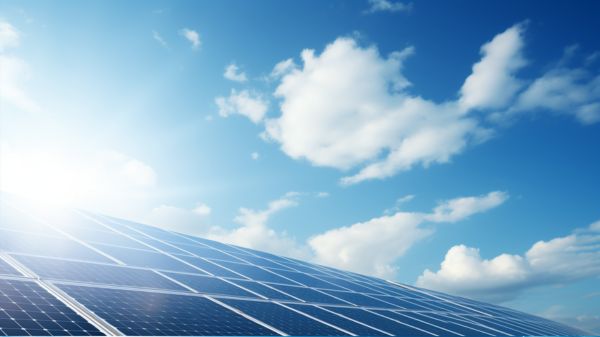Have you ever considered how your energy choices impact the planet you call home?
Renewable energy is your ally in protecting the environment, a shared resource that nurtures us all. When you choose solar, wind, or hydro power, you’re not just lighting up your home; you’re contributing to a cleaner world. These sustainable sources drastically cut emissions that harm the air you breathe and the water you drink, ensuring you’re part of a community that values health and longevity.
As you embrace renewables, you’ll find yourself in good company, surrounded by others committed to preserving the delicate balance of our ecosystems. Your role is pivotal—every watt of green energy bolsters a collective effort to secure a livable future for generations to come.
Let’s walk together on this path towards environmental stewardship, where your choices today shape a greener tomorrow.
Renewable Energy Defined
You’ll often come across the term ‘renewable energy,’ which refers to energy sourced from natural processes that are continuously replenished. This category encompasses solar and wind power, the latter harnessed by towering wind turbines. Similarly, solar panels capture sunlight, converting it into electricity from renewable sources. The deployment of these renewable energy technologies is integral to environmental protection. They offer a pathway to reduce carbon dioxide emissions, a primary driver of climate change.
As you delve deeper, you’ll appreciate the impacts of clean energy. Beyond climate change mitigation, embracing renewables fosters a sense of community as you join others in a collective effort toward sustainability. This shift propels us towards a future where your energy choices directly contribute to preserving our planet.
Environmental Benefits
While you harness the power of renewable sources like wind and solar, you’re also significantly reducing the emission of greenhouse gases, thereby protecting the environment.
Renewable energy projects are pivotal in sustainable development, offering clean energy technologies that minimize emissions throughout their life cycle.
By choosing renewable electricity, you contribute to a decrease in air and water pollution, directly curbing climate change impacts.
The benefits of renewable energy extend beyond mere energy production; they encompass a comprehensive approach to environmental stewardship.
Geothermal, hydroelectric, and other renewables play a critical role in mitigating risks associated with droughts, wildfires, flooding, and species loss, all while fostering a sense of community dedicated to preserving our planet for future generations.
Economic Advantages
Beyond their environmental benefits, renewable energy sources offer substantial economic advantages that you can capitalize on. The plummeting costs of solar facilities and wind energy developments are reshaping electricity generation, driving an energy transition towards more affordable, stable, and sustainable systems. As you consider the future, the increased installed capacity of these technologies buffers against price swings prevalent in fossil fuel markets, promoting economic growth.
Investing in alternative sources of energy isn’t just about reaching net-zero emissions; it’s about seizing the economic opportunity inherent in the shift. By embracing renewables, you’re positioning yourself at the forefront of an inevitable transformation. This forward-thinking approach ensures you’re part of the community striving for a greener, more prosperous world for all.
Technological Innovations
Consistently, technological innovations in renewable energy have been pivotal in driving environmental protection, enhancing efficiency, and fostering a transition away from fossil fuels.
You’re part of a community witnessing renewable technologies like wind and solar advancing rapidly, reducing climate change impacts.
Solar energy and geothermal energy, now more affordable due to new technologies, are becoming mainstream clean sources of energy.
Electric vehicles are revolutionizing transportation, decreasing emissions, and complementing energy production from renewables.
The Department of Energy (DOE) is at the forefront, promoting research that integrates artificial intelligence to mitigate wildlife risks associated with energy infrastructure.
Policy and Implementation
You’ve seen how technological innovations like solar panels and wind turbines are key in the fight against climate change; now let’s explore how policies and their implementation ensure these technologies contribute effectively to environmental protection.
Policy and implementation are the framework within which renewable energy sources like wind, solar, and hydro are integrated into the electricity grid. They’re essential in mitigating the environmental impacts of energy production by setting standards for the reduction of greenhouse gases, including carbon dioxide equivalent per kilowatt-hour.
Strategic policy instruments, such as the Clean Air Act, empower government bodies to regulate and encourage the adoption of clean energy. Additionally, proper implementation ensures the reliability of these renewable sources, while also considering the conservation of natural habitats.
As you belong to a community that values sustainability, understanding these policies underscores your role in supporting a greener future.
Conclusion
Imagine Earth as a vast, intricate web, with every strand representing a vital resource. Your shift to renewables is like reinforcing these threads with resilient fibers, notably slashing CO2 emissions by millions of tons annually. It’s a testament to innovation and stewardship, intertwining technological progress with nature’s preservation.
You’re not just switching on a light; you’re igniting the beacon of sustainability for generations to come. This is the power, the promise, and the imperative of renewable energy in safeguarding our environment.




